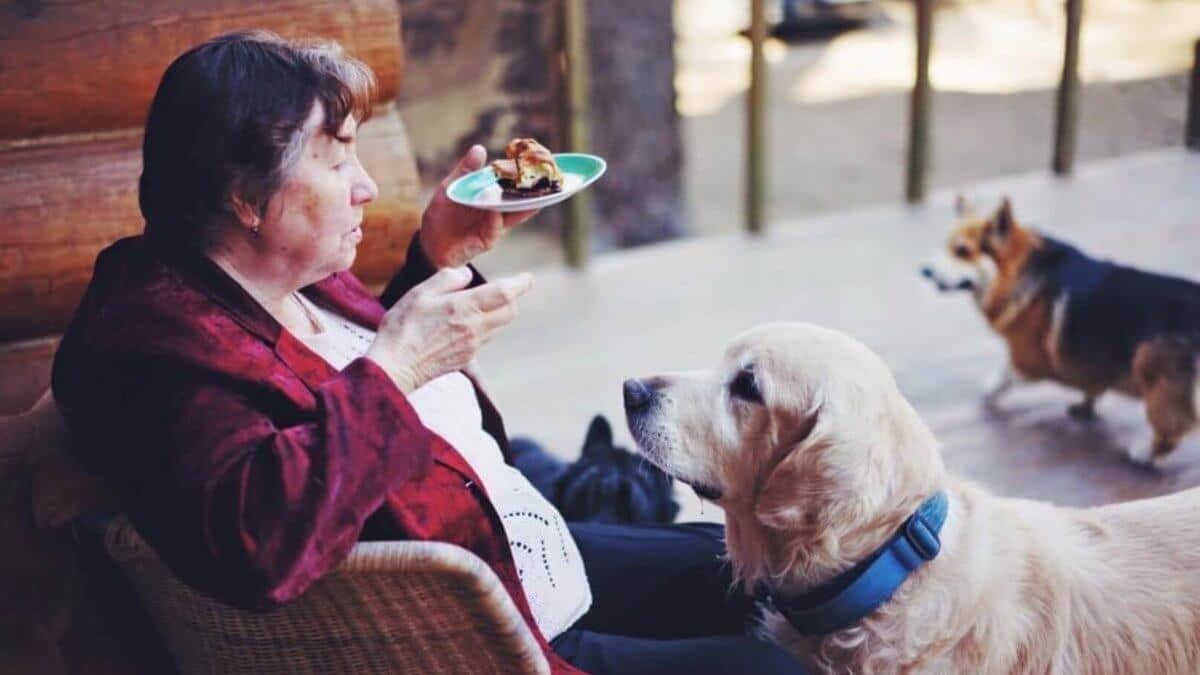
Home » Placing Dogs in Retirement Homes

Strange as it may seem to us, the public finds some aspects of our sport of breeding and showing dogs hard to understand. One of the most controversial is placing adult dogs in retirement homes after their show and breeding careers are over. Dog lovers look at their own treasured pets and simply cannot conceive of ever parting with them. Yet in reality, rehoming our dogs to allow them more one-on-one attention with a devoted owner is an act of selfless love and entirely win-win, when the right pairing is made. The decision is never made lightly.
Even for those breeder-exhibitors who maintain only a handful (single-digit number) of dogs and breed a litter perhaps once every 18 months, there may come a time when we have more dogs than we can do justice to. Presumably we breed to keep something wonderful for ourselves out of the litter, and so that means another promising puppy or two from the next generation to work with, while also keeping a young adult dog in condition and coat to special occasionally. Those of us with partners and families can’t always rely on them to pitch in to help feed, groom, and exercise the dogs that are, first and foremost, our passion (as we are pointedly reminded). Of course, the dogs are fed and cared for, but they often live as a pack, rotate between house and kennel, and get less time on the sofa than they once did.
Science and technology have certainly influenced how we breed dogs today. A good stud dog will have his semen collected and stored to make available to other breeders for years to come. Fewer bitches visit the stud dog’s home to be bred, so his physical presence is not required to service them. A great brood bitch will be bred perhaps three or four times. Rather than sit in a kennel run or the dog room while we are away showing their offspring, that stud dog or brood bitch could be thriving as someone else’s beloved companion, the center of attention rather than having to settle for one-tenth of our time.
Because our show dogs are socialized from an early age and are accustomed to car travel in a crate, hotel stays, examination by judges, perhaps being shown by professional handlers and their assistants, they are generally accepting of new people and new situations, with a little time to transition. Separation anxiety is seldom an issue. Some breeders have had success placing an intact bitch with a reliable owner, taking her back once or twice for a litter. Most breeders have a policy of placing only spayed/neutered animals. Either arrangement provides the dogs with time and attention in a loving home.
Decades ago, “getting a dog” in the public’s mind meant bringing home a puppy. As lifestyles changed over time, with mothers working outside the home becoming the rule rather than the exception, the concept of adding an adult dog to the household, rather than a young, needy puppy, caught on. The long-ago, nationwide campaign of adopting ex-track racing Greyhounds no doubt helped to convince the public that dog ownership for working adults was more doable with an older animal.
Whatever our breeds, we all know great owners who can no longer cope with a young, boisterous puppy but are still active, take long walks or jogs daily, and don’t want to be without a dog. These folks are perfect candidates to give a deserving adult dog a retirement home. Depending upon the breed, the dog’s age, and the inclination of the new owner, they may even explore an array of performance events after the conformation days are over.
Seven years ago, after my partner passed away suddenly, I decided to place three adult male Afghan Hounds, keeping my three girls, to make life more manageable for me. One young champion boy that had finished quickly from the Bred-by-Exhibitor class and won many Bred-by Group Firsts, is now happily Lure Coursing and competing in Agility with his co-owner, a longtime breed enthusiast. I clipped the dog down when he left, thinking his big coat would be burdensome to care for, but he has been kept in lovely coat since then, and beautifully maintained. Another athletic boy went to a woman who runs in competitive marathons.
Some retired champions, with an easygoing, “up for anything” attitude and energetic owners, excel in performance events, from Rally to Barn Hunt to Fieldwork. Others thrive with daily walks in the park and long naps on comfortable furniture. The point is, there are great homes out there, and great dogs deserving of them. We all have a “heart dog” that we would never place. But a big part of being a responsible breeder is keeping our numbers realistic, ensuring that all the dogs in our care enjoy a quality of life, and seizing on an opportunity to place an adult in a wonderful home whenever one comes along.
